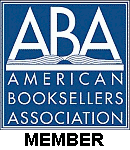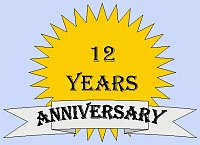 John Graves was a native Texan, born and educated there. Though he traveled for a brief period after graduating from college, in 1958 he returned to Texas. It was here that the core of his being as a writer developed. He had been familiar with the Trinity River as a child and in 1957 deliberately took a canoe trip down the Brazos River when the river was threatened by a dam.
John Graves was a native Texan, born and educated there. Though he traveled for a brief period after graduating from college, in 1958 he returned to Texas. It was here that the core of his being as a writer developed. He had been familiar with the Trinity River as a child and in 1957 deliberately took a canoe trip down the Brazos River when the river was threatened by a dam. He went on to produce his best known major work Goodbye to a River: A Narrative (1960), developing it from an original magazine article about the natural state of the river.
He went on to produce his best known major work Goodbye to a River: A Narrative (1960), developing it from an original magazine article about the natural state of the river.
The second of Graves' major books was Hard Scrabble: Observations on a Patch of Land (1974). By this time he had purchased land near Glen Rose, Texas and it was his experiences living there that provided the ideas and materials for the book.

Third in his most influential books is From a Limestone Ledge: Some Essays and Other Ruminations About Country Life in Texas (1980). It represents both a continuing thread of ruminations about his place on the land as well as his maturity as a writer. Most of the essays had originally been published in Texas Monthly magazine.

The last of Graves' important writing in book form was his memoir Myself and Strangers: A Memoir of Apprenticeship (2004). It focuses on the period of time when as a young man, he had left Texas, conscously determined to be a writer. This book is notable for the craftsmanship of its author as well as what it reveals in hindsight about how important his prolonged apprenticeship as a writer was to finding his own unique voice.
Graves' body of work superficially seems brief, but on closer observation he had established himself as a professional if not outstanding writer as early as the publication of his first book. Since then, his articles, essays, and short stories have appeared in The Atlantic, American Esquire, and The New Yorker. He has also produced introductions for the work of other writers as well as the text for several books of photography. Appreciating Graves' work and cultural influence requires the reader to develop an understanding, or at least a broad impression, about the place of this author within the broader literary heritage of Texas. An important part of this continuity is the important friendship he developed with J. Frank Dobie in the 1950s. This friendship was based both on Dobie's early appreciation for the quality of Graves' work as well as their instinctive mutual liking for each other.
Additional titles by Graves include the text for Landscapes of Texas: Photographs from Texas Highways Magazine (1980), Blue and Some Other Dogs (1981), The Last Running: A Story (1990), Self-portrait with Birds: Some Semi-ornithological Recollections (1991), A John Graves Reader (1996), the introduction for the 1999 reprint of This Stubborn Soil: A Frontier Boyhood, the text for Texas Rivers (2002), the foreword for The Earth Remains Forever: Generations at a Crossroads (2002), the text for Texas Hill Country (2003), the foreword for Revealing Character: Robb Kendrick's Texas Tintypes (2005), and My Dogs and Guns (2007). (See also 'John Graves, Writer' (2007) edited by Mark Busby and Terrell Dixon.)

Home
Older Article: Dave Oliophant, Texan poet and Jazz historian

John Graves and the Texas literary heritage by Steven Williams is licensed under a Creative Commons Attribution-Noncommercial-No Derivative Works 3.0 United States License.
Permissions beyond the scope of this license may be available by contacting Steven Williams through Bookmarc's BookmarcsOnline.








